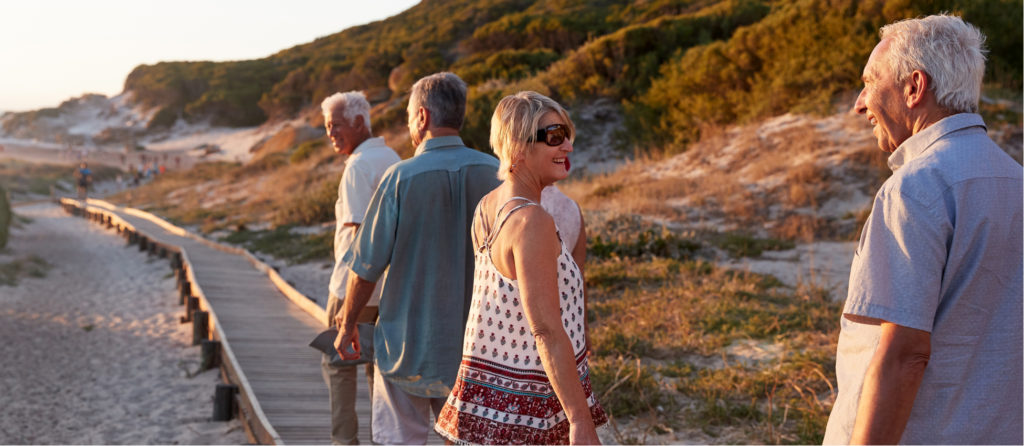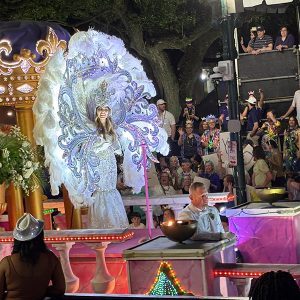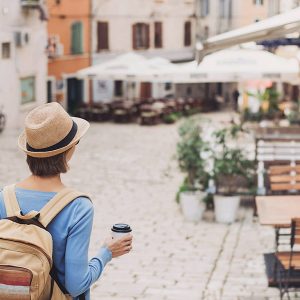Big bustling Budapest
Next day 9.30am. In the castle district on Buda side. So much to see here in such a relatively small space. UNESCO heritage again and stunning sunshine again.
Narrow streets and alleyways. Romanesque, Baroque and Gothic buildings compete to be the best. The area suffered substantial destruction in 1944 and 1945 and has been almost totally rebuilt, so well that you can’t see the joins. A popular tourist attraction and we were not alone. Many other groups here eager to discover. It is a lovely area with ornate houses in different hues. Pastel coloured restaurants, a pharmacy and a Post Office. We were joined once again by Katya, our guide from last night’s cruise. She was excellent again, knowledgeable with a light humorous touch. Trafalgar had chosen well, all our guides on the tour have been superb.
 We walked past the House of Houdini museum. The greatest escape artist of all time was born in Budapest (24 March 1874) as Erik Weisz. Later living in the USA he changed his name to Ehric and then Harry and took the surname Houdini. The rest, well, it’s history. It’s magic! Harry finally made his great escape from this world on 31 Oct 1926 in Detroit. I was intrigued and almost went into the museum but reluctantly didn’t- just in case we couldn’t find our way out! ‘Where magic never ends’ is the museum’s strapline. For us though it never started.
We walked past the House of Houdini museum. The greatest escape artist of all time was born in Budapest (24 March 1874) as Erik Weisz. Later living in the USA he changed his name to Ehric and then Harry and took the surname Houdini. The rest, well, it’s history. It’s magic! Harry finally made his great escape from this world on 31 Oct 1926 in Detroit. I was intrigued and almost went into the museum but reluctantly didn’t- just in case we couldn’t find our way out! ‘Where magic never ends’ is the museum’s strapline. For us though it never started.
A special surprise near Matthias church. Trafalgar had commissioned a professional photographer to take a group photo. A nice touch and a nice keepsake. Job done and onto the famous turreted Fisherman’s Bastion. Swarming with fellow tourists and street vendors but well worth the queue and the pestering. You get one of the best views of the city from here. Sweeping panorama with views up and down the river. The Bastion was finished in 1905 as a monument to celebrate the triumph of the fisherman defending Buda against marauding Turks in the Middle Ages.
The much visited Trinity Square is overshadowed by Matthias church – colourful in the extreme. Here again is one of the most photographed sites in the whole of Hungary. The Gothic church tower back dropped against the Bastion has been seen all over the world. Matyas Hunyadi was Hungary’s popular king, and he gets his recognition by having the church dedicated to his name. The multi-coloured roof is fascinating and fabulous today gleaming in the ever present sunshine. Zsolnay the ceramic company from Pecs supplied the tiles.
The old town really is something very special. Oozing history and a sense of purpose and travelling down the narrow alleyways is like being in a time travel experiment. A quick coffee at Jamie Oliver’s cafe – he gets everywhere. “With you for the journey” stencilled on the toilet pan? Interesting yet confusing. A journey around the bend – Danube or U maybe?
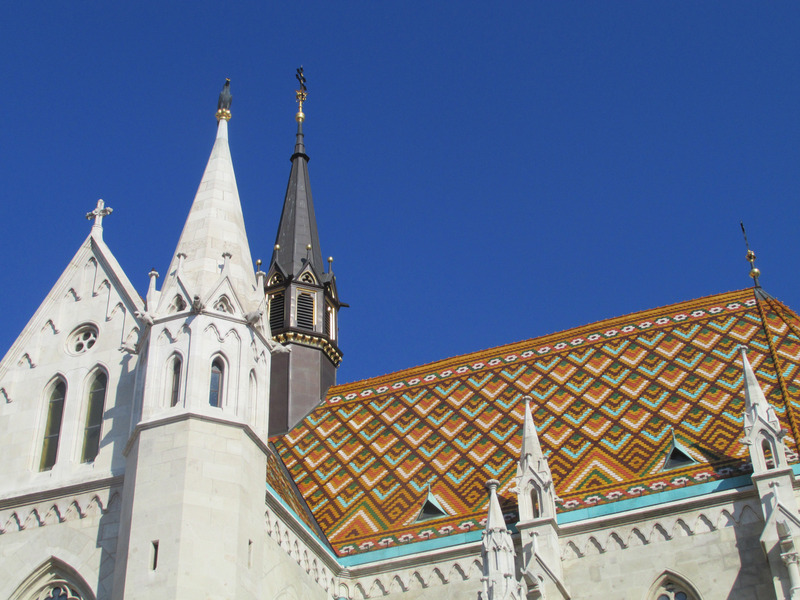 The wonderful yet grim ‘Hospital in the Rock Museum’ is hidden under Buda Castle – so well hidden that we had to ask a policeman. It is a WW2 relic. 20,000 troops hid in this labyrinth of caves and the hospital cared for 1000s of Hungarian and German troops. It was used during the 1956 uprising and as a nuclear shelter in the 1960s for those communists at the top of the pyramid. Tours every hour.
The wonderful yet grim ‘Hospital in the Rock Museum’ is hidden under Buda Castle – so well hidden that we had to ask a policeman. It is a WW2 relic. 20,000 troops hid in this labyrinth of caves and the hospital cared for 1000s of Hungarian and German troops. It was used during the 1956 uprising and as a nuclear shelter in the 1960s for those communists at the top of the pyramid. Tours every hour.
Gabor drove us across the river, destination Pest, past the lions guarding Chain Bridge. The city has many grand tree-lined boulevards, the finest being Andrassy Avenue. Budapest’s equal to the Champs-Élysées. 2.3km long linking the downtown area with Heroes Square and neighbouring City Park. Shops compete for your attention and Florints. The Opera House is stunning, probably as good as Vienna’s. And below our feet, the Millennium underground still operating today. Budapest is the home of the second oldest electrified underground railway system in the European continent and the world, which began operation in 1896. Predated only by the 1890 City & South London Railway (now part of the London Underground).
Heroes Square is vast. Home to the Tomb of the Unknown Soldier which dominates the centre. Home to a salute to the Hungarian leaders from history also. Archangel Gabriel sits 36 metre up on top of a column, surveying and protecting the city. Surrounding the column are the 7 tribal chiefs of the Hungarian Conquest of 896. Situated behind in two semi-circular sweeps are 14 other Hungarian kings. This is an important place of celebration for the whole country. In late September it is turned into a horse racing track. Villages and towns compete to take home the appropriately named Gallop Sword trophy.
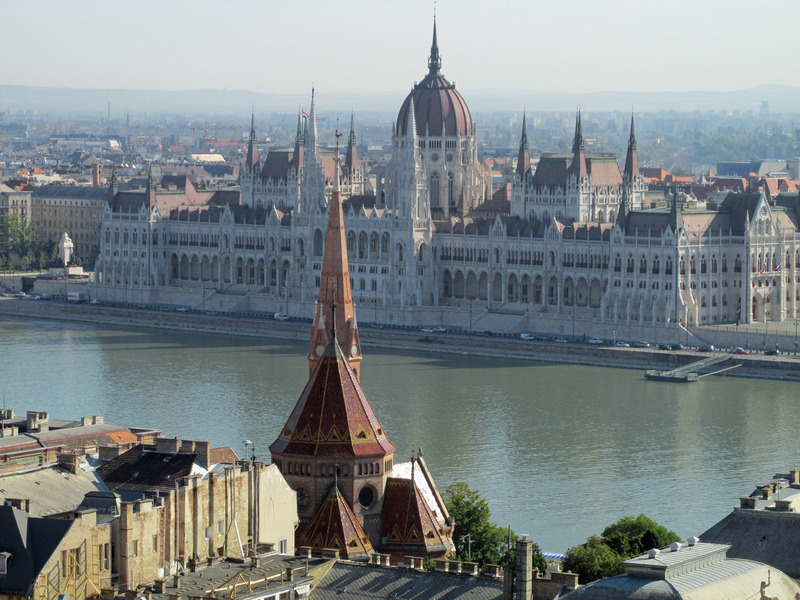 Not far away City Park lake was full of joy, full of boats and picnics and families enjoying family life. It was here that our group split up. Trafalgar’s optional tour – a guided tour to St Stephen’s Basilica and the synagogue – largest in Europe. All washed down with a Grundel pancake, nuts, cream and chocolate covering the pancake. Famous the world over though I must confess that I have never heard of them. Pancakes are too sickly for me, but they were enjoyed by all who tried them.
Not far away City Park lake was full of joy, full of boats and picnics and families enjoying family life. It was here that our group split up. Trafalgar’s optional tour – a guided tour to St Stephen’s Basilica and the synagogue – largest in Europe. All washed down with a Grundel pancake, nuts, cream and chocolate covering the pancake. Famous the world over though I must confess that I have never heard of them. Pancakes are too sickly for me, but they were enjoyed by all who tried them.
We had a wonderful meal at Menza in Liszt Ferenc. Recommended by a couple of travel mags. So much more than a cafe, almost a Hungarian institution and a real treat. The roast beef (more a steak) was excellent with a twist- twisty, stringlike onion rings which were excellent. Fran Lebowitz once said “my favourite animal is steak”. And I agree with his sentiment, and it’s the main reason I am not vegetarian.
After dinner, it was time for some quiet sombre reflection. Budapest has had a turbulent history and been the brunt of man’s inhumanity. The ‘Shoes on the Danube Holocaust’ memorial brought me to tears. Jews were killed, shot into the Danube! A sad and simple but very powerful memorial. An American tourist turned to me and whispered “gone but never ever forgotten. I nodded and felt completely overwhelmed by the whole experience. And for once said nothing.
Number 60, Andrassy Avenue is a cold blue and gloomy building and once was the most feared building in the city. A house of dread and terror. Once the HQ of the Arrow Cross Party (Hungarian Nazis) and then between 45 and 56 home to the communist AVO and AVH – the secret state police. Now a museum to commemorate the victims of these fascist and communist regimes. A period in time in which man’s cruelty showed no limit. Brilliantly staged. You know it is no ordinary museum the moment you see a tank hidden in a central courtyard. And so begins a roller coaster ride of emotion, guilt, sadness, anger but ultimately hope.
A fitting tribute to all who were interrogated, tortured and killed in this very building. The descent in the darkened lift down to the torture chambers will remain with me forever. Harrowing and sobering- as are the double thickness walls built to muffle sounds. The guide book sums everything up “The building is itself the statue of terror, a monument to the victims. It demonstrates today that sacrifices brought in the name of freedom are never futile. From the fight against the two murderous regimes, the powers of freedom and independence have emerged victorious.” AMEN.
See also
- Trafalgar Tours – Prague, Vienna and Budapest: Chapter 1 – preparing to travel
- Trafalgar Tours – Prague, Vienna and Budapest: Chapter 2 – a stunning city and new friends
- Trafalgar Tours – Prague, Vienna and Budapest: Chapter 3 – a guided walk and music by candlelight
- Trafalgar Tours – Prague, Vienna and Budapest: Chapter 4 – city wonders and cafe life
- Trafalgar Tours – Prague, Vienna and Budapest: Chapter 5 – Vienna bound
- Trafalgar Tours – Prague, Vienna and Budapest: Chapter 6 – a Viennese whirl
- Trafalgar Tours – Prague, Vienna and Budapest: Chapter 7 – having a ball
- Trafalgar Tours – Prague, Vienna and Budapest: Chapter 8 – Budapest bound
- Trafalgar Tours – Prague, Vienna and Budapest: Chapter 10 – Goodbye Budapest
